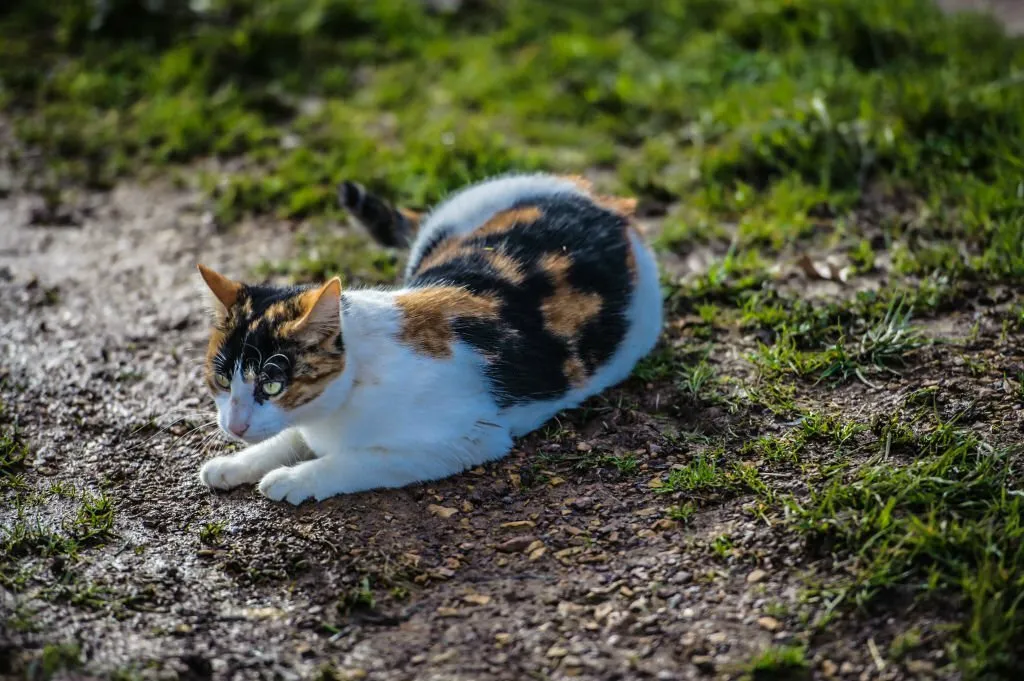Do you want to get a better understanding of feral cat behavior? Here, you will get to understand feral cats’ behavior.

Feral cats are also known as wild or free-roaming cats, with their unique behavior.
These cats have a storied history and a distinctive behavioral pattern influenced by their environment and the process of adaptation.
Furthermore, understanding their behavior requires an exploration of their distinct social structures, territorial instincts, and survival strategies.
As you keep on reading, you will get to understand feral cat behavior.
Understanding Feral Cat Behavior

Feral cats exhibit strong territorial instincts, fiercely protecting their claimed areas.
Interestingly, their territories are marked through various means, primarily through scent marking and visual cues.
Scent marking involves rubbing against objects, spraying urine, and scratching, leaving olfactory signals that communicate boundaries to other cats.
Also, these territorial behaviors are pivotal in their survival, especially in securing essential resources and in finding mates.
Understanding the nuances of these marking behaviors gives a glimpse into the complexities of their communication and territorial management.
Feral Kitten Behavior
Feral kittens are often fearful of humans and might avoid contact, choosing to hide or flee when approached.
While cautious, young feral kittens might also exhibit curiosity about their surroundings and might cautiously explore areas when they feel safe.
In addition, feral kittens display natural survival instincts, seeking food, shelter, and safety. They might be cautious around unfamiliar stimuli.
Interestingly, kittens learn from observing their feral cat mother or other kittens, picking up behaviors and cues for survival.
Even in a feral environment, kittens might engage in play activities, which are crucial for their physical and social development.
Feral Cat Behavior Indoors
Feral cat behavior indoors can initially display characteristics associated with fear, shyness, and wariness due to the new environment.
Sometimes, they might be cautious or avoid human contact, preferring to observe from a distance or hiding.
In addition, some feral cats might vocalize their distress or anxiety through hissing, growling, or meowing.
Feral cats might exhibit defensive behaviors, such as crouching, flattening ears, or showing signs of stress like dilated pupils when they are indoors.
Reproductive Patterns of Feral Cats
Feral cats have adapted to the environment and display unique reproductive patterns.
Interestingly, they reproduce prolifically, with female cats capable of having multiple litters each year.
This adaptability contributes to the increasing feral cat population and poses challenges to managing their numbers.
Their reproductive patterns are influenced by environmental factors, with prolific breeding often triggered by food availability and climate.
Addressing the issue of overpopulation requires a comprehensive understanding of their reproductive behaviors and strategic interventions.
Survival Strategies and Feeding Habits of Feral Cats
Survival in the wild demands adaptive feeding strategies.
Feral cats display a range of feeding habits, from hunting small prey to scavenging for food in urban or rural environments.
Also, their ability to hunt and scavenge ensures their sustenance, but it also poses challenges, especially when competing with other predators and human activities.
Understanding their feeding behaviors can aid in creating sustainable interventions that balance their need for food with the ecological equilibrium of the environment.
Interaction Between Feral Cats and Human
The interaction between feral cats and human communities presents a complex challenge.
While some individuals provide care and support for feral cat colonies through managed feeding and healthcare, others view them as a nuisance, leading to conflicts and attempts at eradication.
Managing feral cat populations requires a balanced approach that considers both the cats’ welfare and the concerns of local communities.
Strategies involving Trap-Neuter-Return (TNR) programs have shown promise in stabilizing and managing feral cat colonies while minimizing their impact on the environment.
Related Searches:
